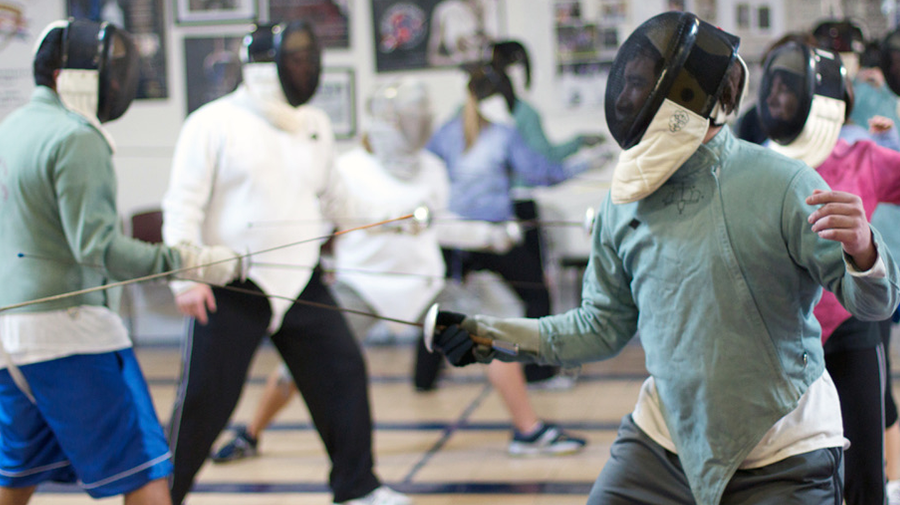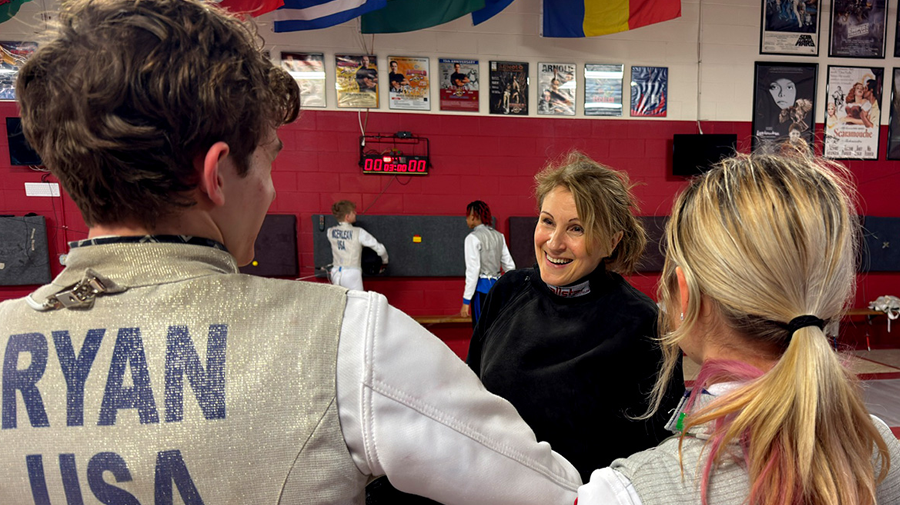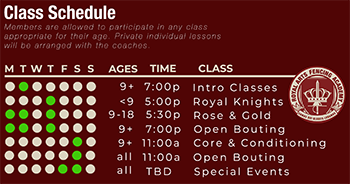Joseph S. Streb Wins Bronze In Foil At 2016 Veteran World Championships
FOR IMMEDIATE RELEASE
STRALSUN, GERMANY, October 11, 2016 - Joseph S. Streb won an individual bronze medal today as a member of the U.S. National Veteran Foil team at the 2016 Veteran’s World Fencing Championships in Stralsund, Germany. “I have been waiting for years to win a medal in foil at the World Championships,” Streb said, “and it was not easy against European countries who have hundreds of years of sword fighting experience.” Streb lost in the semi-finals 10-9 to the eventual winner from Japan. Seven hundred forty-six fencers from forty-seven countries were represented in the competition which will continue for the remainder of the week in this Baltic sea port. Fencing is a popular sport in Europe, second only to soccer.
Streb has been a member of eleven U.S. Veteran national fencing teams, previously participating in the World Championships in 2002 (U.S.), 2004 (Austria), 2005(U.S.), 2007 (Australia), 2008 (France), 2009 (Russia), 2012 (Bulgaria), 2013 (Hungary), and 2014 (France). He has won two national championships in foil, and he has won five previous World Championship medals, all in saber, including individual bronze and team gold last year in Limoge, France. It is necessary to be among the top four fencers in the United States in order to qualify to compete in the Veteran World Championship.
Streb resides in Upper Arlington with his wife and three children, and he works as an attorney in Columbus. He has been fencing competitively for twenty-five years in all three fencing weapons: foil, saber, and epee. Streb is a member of the Royal Arts Fencing Academy and the Columbus Fencers’ Club where he is coached by his son, Joseph T. Streb. He also sometimes trains at the Ohio State University with the OSU varsity fencers.
There are three weapons in the sport of fencing, all with different rules and target areas on the opponent’s body. When asked to explain the difference between foil, saber, and epee, Streb said, “When people think of lunging to hit the opponent's heart, they are thinking of foil.” In foil, it is necessary to stab the opponent in the chest to score. “When people think of slicing the opponent, they are thinking of saber,” he said. “Many people also know about the saber weapon from movies, such as, Zorro, and they know about the epee weapon from movies, such as, the James Bond film, Die Another Day.” In epee, the entire body is a valid target and there are very few rules. Both the epee and saber weapons were used in actual sword dueling before dueling was outlawed in the U. S. in 1834. On the other hand, foil fencing developed as practice for deadly combat, and only the torso of the opponent is valid target. There is also a “right-of-way rule” whereby if both fencers hit on the valid target area, the one who started to attack first is awarded the touch. “Double attacks in sword fighting are discouraged for obvious reasons,” Streb noted. “Running one's opponent through is the object, but there is no benefit in impaling yourself in the process.”
Unlike in Europe where even small town municipal sport facilities have fencing halls, the sport of fencing in the United States is found mainly in large cities and near major universities. However, the sport continues to grow in the U.S., in part because it is possible for both men and women to compete locally, regionally, nationally, and internationally at any age. Fencing is the only sport to be continuously part of the modern Olympic Games.
See also, USFencing.org.










